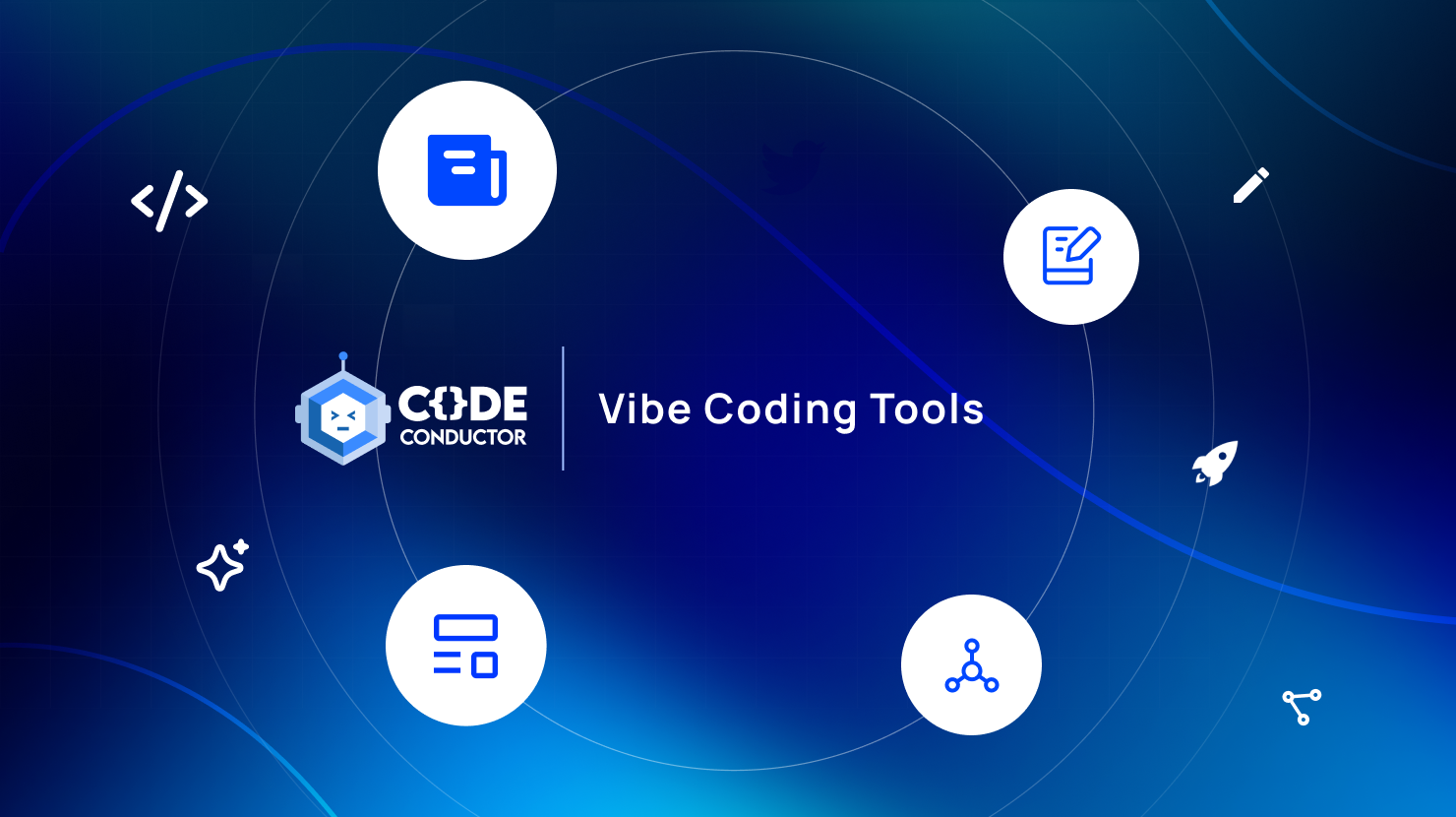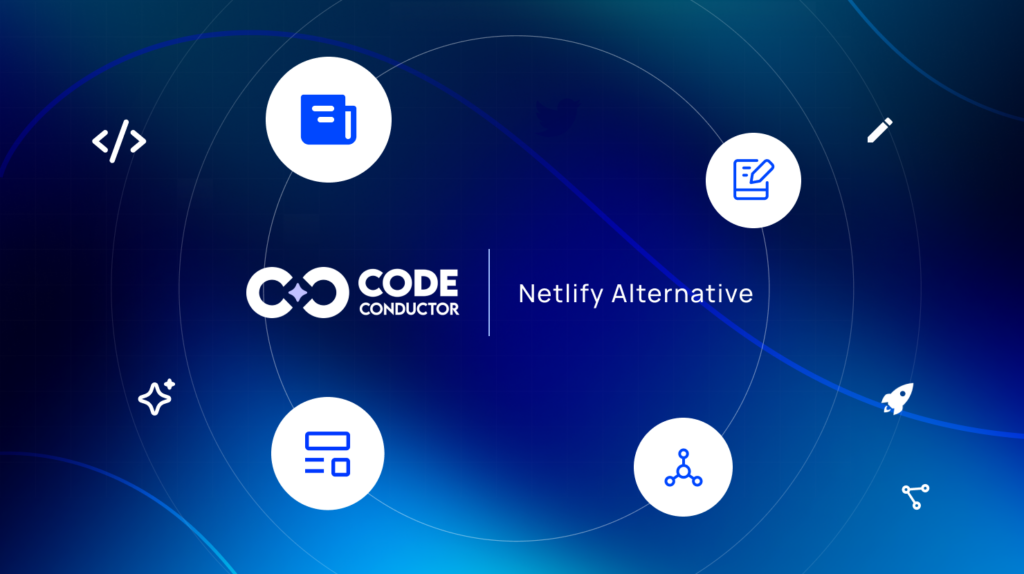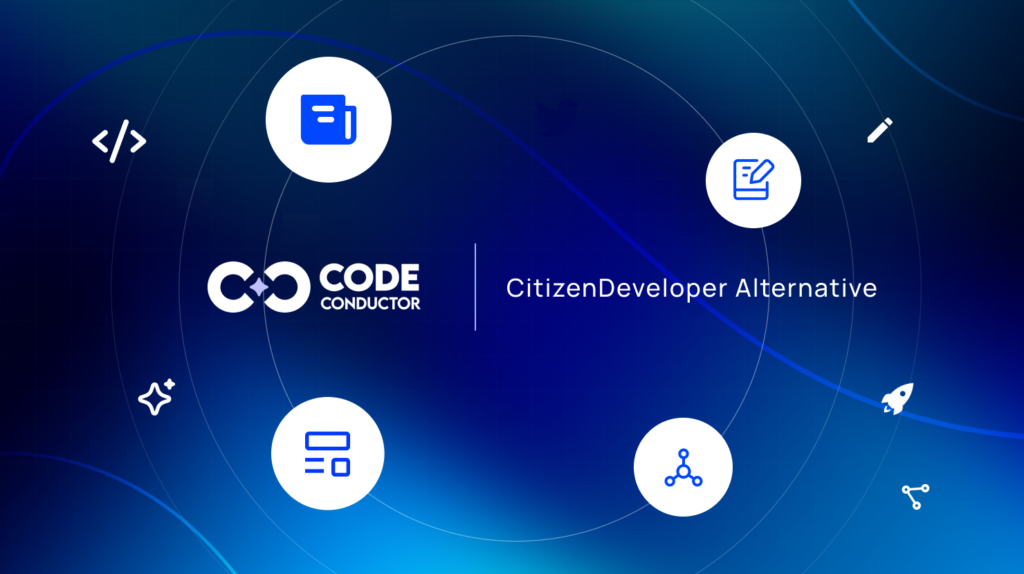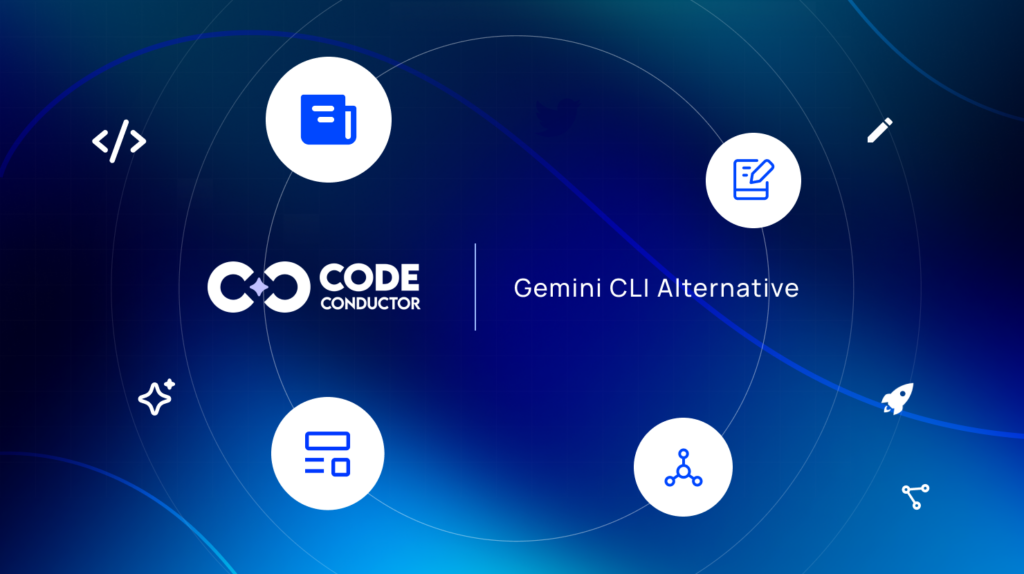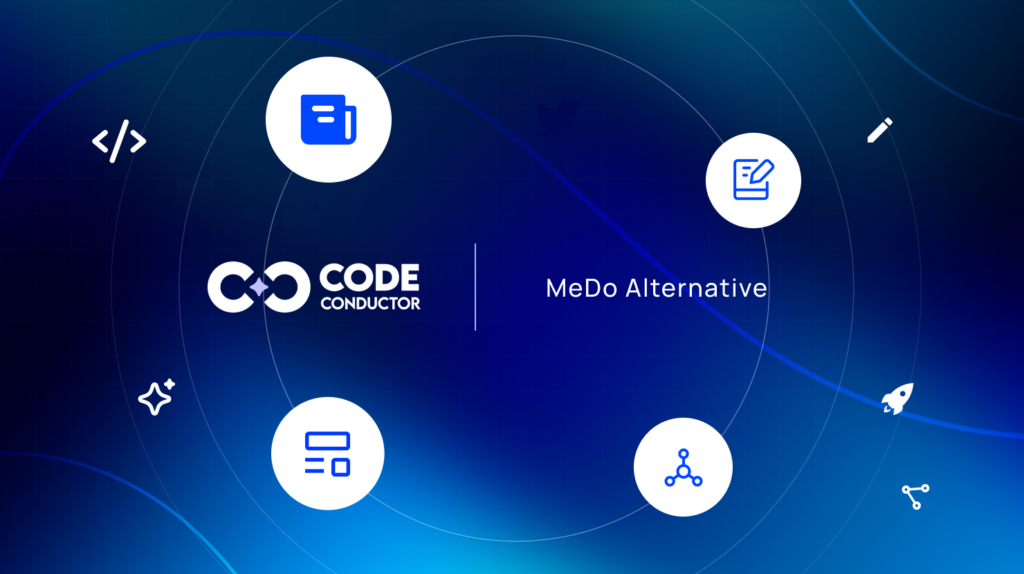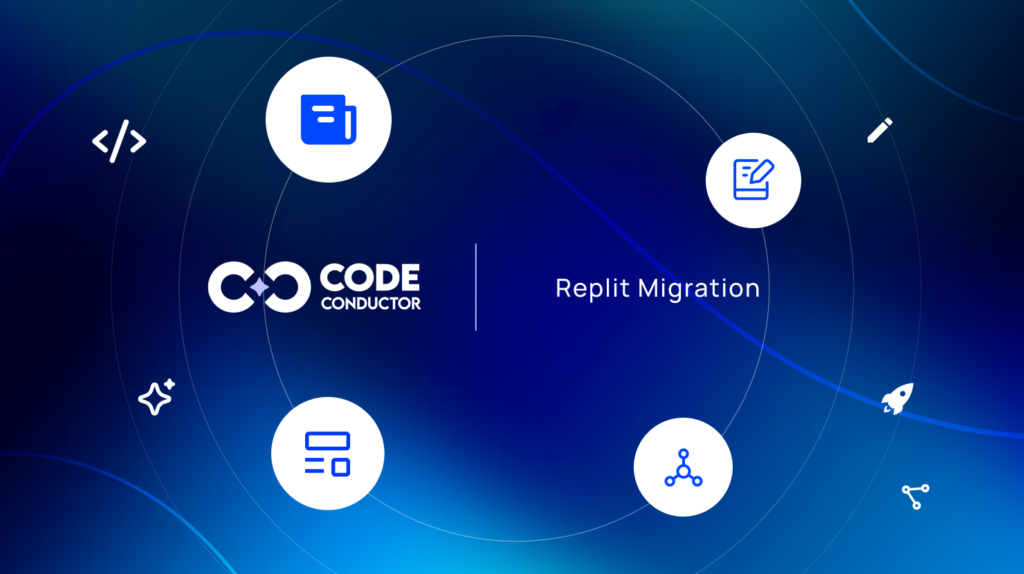The way people create software is changing fast in 2025. More developers, makers, solopreneurs, and enterprises are turning to vibe coding tools that make building software more productive and enjoyable. These platforms go beyond traditional coding environments. They combine AI-powered assistance, collaboration features, and smooth design to help users stay focused while turning ideas into working apps faster.
Unlike older coding setups that often required heavy configuration and technical barriers, the best vibe coding apps reduce friction. They create an atmosphere where anyone can move from brainstorming to building with less stress and more flow. Some focus on improving focus with music and clean interfaces, while others unlock the power of automation and intelligent code generation.
At the center of this new wave is CodeConductor, a platform that shows how much the space has evolved. CodeConductor empowers solopreneurs, teams, and enterprises to build apps with AI that are secure, scalable, and production-ready. Instead of writing every line of code from scratch, users can describe what they need in plain language and let the platform generate front-end, back-end, APIs, and databases automatically.
This shift toward vibe coding is not just about speed. It is about giving more people access to app creation, supporting creativity, and scaling projects for both individuals and organizations.
In This Post
- What Makes a Great Vibe Coding Tool?
- Best Vibe Coding Tools in 2025
- Comparison Table of Vibe Coding Tools
- How to Choose the Right Vibe Coding Tool for You
- What’s Next for Vibe Coding Tools?
- Take the Next Step
- FAQs About Vibe Coding Tools
- What are vibe coding tools?
- What are the best vibe coding apps in 2025?
- Can I build apps with AI using these tools?
- Are vibe coding tools only for developers?
- Which vibe coding tool is best for startups?
- Which vibe coding tool is best for enterprises?
- What’s the difference between vibe coding tools and traditional coding platforms?
What Makes a Great Vibe Coding Tool?
With so many options available, choosing the right platform means looking at what makes a tool stand out. The best coding platforms today are not just about writing code. They are about creating the right environment for productivity, creativity, and scale.
Here are the key qualities that define great vibe coding tools in 2025:
- AI-Powered Assistance: Modern tools act as more than just editors. The strongest solutions double as AI app builders that can generate code, fix bugs, and even design workflows automatically. This makes them useful for both experienced developers and complete beginners.
- No-Code and Low-Code Options: Not everyone wants to write complex code. Many platforms now position themselves as no-code AI tools that let solopreneurs, entrepreneurs, and teams build applications simply by describing what they need. This opens up app creation to people who may not have a technical background.
- Collaboration and Team Support: Whether you are a solo founder or part of a large enterprise, teamwork matters. Great vibe coding platforms allow real-time collaboration, version control, and smooth project sharing.
- Scalability and Deployment Flexibility: The best tools scale with you. From side projects to enterprise-level apps, they offer deployment options across cloud, containers, and even on-premises setups.
- Security and Reliability: Any platform aiming to be one of the best coding platforms must take security seriously. Encryption, access control, and compliance with industry standards are no longer optional — they are expected.
By combining these elements, vibe coding platforms enable anyone to transition from an idea to a working product with less effort and greater speed.
Best Vibe Coding Tools in 2025
1. CodeConductor
CodeConductor is one of the most versatile AI coding platforms available in 2025. It is designed for solopreneurs, startups, and enterprises that want to move from idea to deployment in record time. Unlike traditional editors, it acts as a full AI app builder, capable of generating secure front-end, back-end, APIs, databases, and authentication in just minutes.
Key Features:
- Prompt-based interface that turns plain English into working apps.
- Full ownership of code with no vendor lock-in.
- Flexible deployment across cloud, Kubernetes, or self-hosted environments.
- Enterprise-grade security with encryption, compliance, and role-based access.
- Visual customization wizard to fine-tune apps without complex coding.
- Seamless integration with popular tools and APIs.
Why It Stands Out:
CodeConductor goes beyond being one of the best vibe coding apps for developers. It is also built for solopreneurs, entrepreneurs, and large organizations that want to build apps with AI at scale. Its unique advantage is speed to production, you can Finish Vibe Coded Apps With CodeConductor and take them live without losing time to technical complexity. With enterprise security, CI/CD support, and rapid prototyping, it combines the simplicity of no-code AI tools with the power of production-ready development.
2. Replit Ai
Replit is one of the most popular AI coding tools, known for its browser-based development environment and strong collaboration features. With millions of users worldwide, it helps individuals, teams, and enterprises turn ideas into production-ready apps quickly.
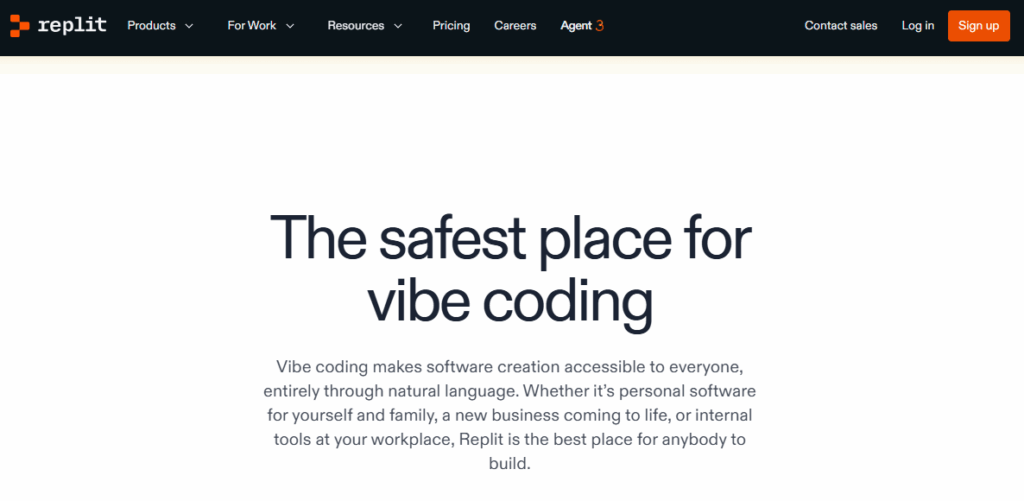
Key Features:
- An AI-powered Agent that can build, test, and refine apps automatically.
- Multiplayer editing for seamless team collaboration.
- Built-in database, authentication, and third-party integrations.
- Visual editor with support for importing Figma designs.
- SOC 2 compliance, role-based access, and enterprise-grade security.
- Ability to build agents and automations for workflows.
Why It Stands Out:
Replit is more than just a code editor. It positions itself as one of the leading AI coding platforms, making vibe coding for enterprise, developers and non-developers alike accessible through natural language. For teams seeking a Replit Ai alternative, this platform continues to be a benchmark in speed, accessibility, and collaborative software creation.
3. Cursor
Cursor is an AI-first code editor built to make developers faster and more productive. It blends the familiarity of Visual Studio Code with advanced AI assistance, making it one of the most effective AI coding tools on the market.
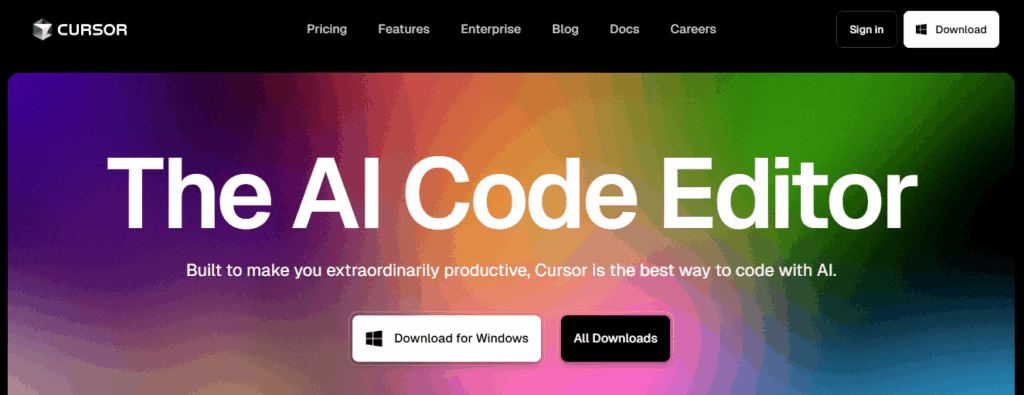
Key Features:
- Natural language editing to update classes, functions, or files instantly.
- Tab-completion that predicts edits and accelerates workflows.
- Deep integration with your codebase to provide accurate AI suggestions.
- Import all VS Code extensions, themes, and key bindings.
- Privacy-first approach with SOC 2 certification and optional privacy mode.
Why It Stands Out:
Cursor is designed as more than just an editor. It positions itself as a complete AI coding platform that feels familiar while giving developers AI superpowers. For teams and individuals seeking a cursor alternative that surpasses traditional code editors, it provides seamless speed, intelligence, and a developer-focused experience.
4. Base44
Base44 is a fast-growing name in the world of AI coding tools, helping users turn plain text into fully functional applications within minutes. It is built for makers, entrepreneurs, and teams who want to skip setup complexity and start shipping apps instantly.
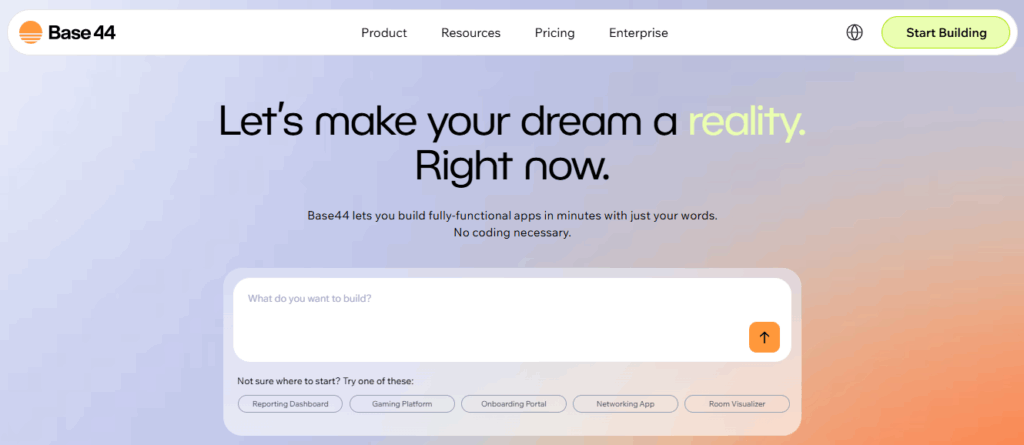
Key Features:
- Natural language prompts that transform ideas into complete apps.
- Automatic generation of front-end, back-end, authentication, and databases.
- Hosting and deployment included, so apps are ready to launch right away.
- Designed for speed with minimal manual configuration.
- A growing library of use-case templates, including dashboards, onboarding portals, and networking apps.
Why It Stands Out:
Base44 simplifies app creation for non-technical users while still being powerful enough for teams. It is positioned as one of the most intuitive AI coding platforms available today. For users exploring a Base44 alternative, it stands as a reference point for how fast and seamless app development can become with AI-powered automation.
5. Lovable
Lovable is an emerging name among AI coding tools, enabling the creation of full apps and websites through simple AI chat. It is designed for startups, product teams, and makers who want to bring creative ideas to life without deep technical barriers.
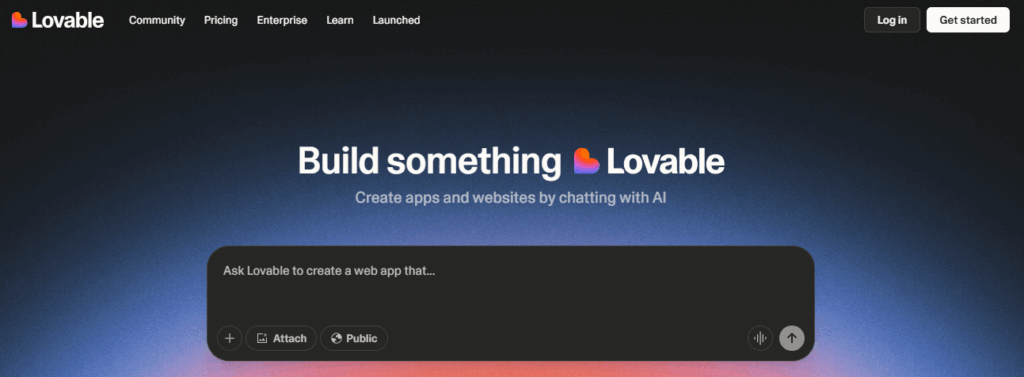
Key Features:
- Chat-based interface for building apps with AI.
- Generates front-end, back-end, and workflows with minimal coding.
- Easy integration with design tools like Figma.
- Supports multiple use cases from prototypes to production-ready apps.
- Enterprise options for security, scaling, and collaboration.
Why It Stands Out:
Lovable takes a conversational approach to app creation, making it accessible for both non-developers and technical teams. As one of the most creative AI coding platforms, it is a strong option for rapid prototyping. For those searching for a lovable alternative, it highlights how conversational AI can redefine the way software is designed and launched.
6. v0 by Vercel
v0 by Vercel is a next-generation AI coding tool that focuses on front-end development and design. It allows users to generate complete user interfaces with a single prompt, making it one of the most design-friendly AI coding platforms available today.

Key Features:
- Create prompt-based apps and UIs with no coding required.
- Large template library for websites, dashboards, and SaaS apps.
- Seamless integration with Next.js and Vercel’s deployment ecosystem.
- Collaboration features for teams working on design-heavy projects.
- Enterprise options with advanced scaling and support.
Why It Stands Out:
v0 is especially powerful for builders who want pixel-perfect interfaces without manual design work. By pairing AI with Vercel’s ecosystem, it is well-positioned as a go-to tool for front-end and product design teams. For anyone exploring a v0 alternative, it shows how quickly AI can turn design prompts into production-ready apps.
7. Bolt
Bolt is a modern AI coding tool that helps users create apps, websites, and prototypes just by chatting with AI. It is designed for speed and simplicity, making it a favorite for entrepreneurs, makers, and product teams who want to test ideas and launch faster.
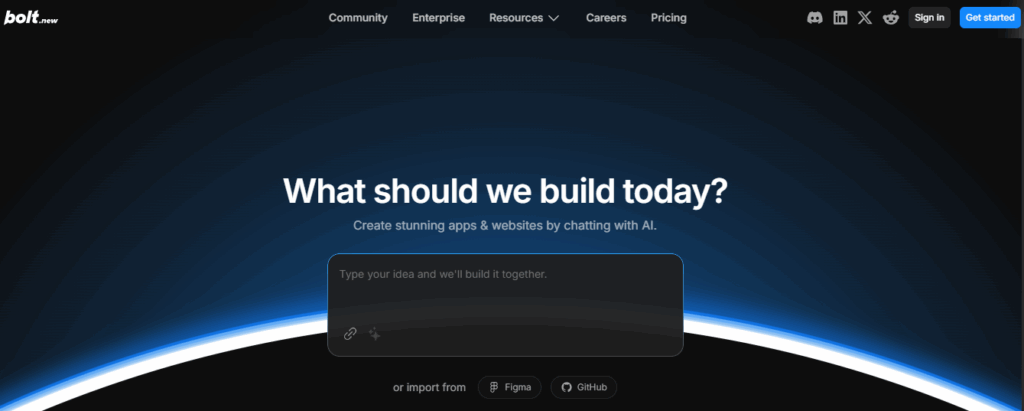
Key Features:
- Conversational AI interface for app and website creation.
- Generates full-stack applications with front-end, back-end, and integrations.
- Rapid prototyping with minimal technical setup.
- Built-in hosting and deployment options.
- Templates and pre-built components for common use cases.
Why It Stands Out:
Bolt enables you to transform ideas into working prototypes in minutes, eliminating the steep learning curve associated with traditional coding. As one of the most agile AI coding platforms, it empowers users to validate ideas quickly and scale projects over time. For anyone searching for a bolt alternative, this tool shows how conversational AI can simplify software creation for individuals and teams.
Comparison Table of Vibe Coding Tools
| Tool | Best For | Key Features | Deployment & Scale | Notable Advantage |
|---|---|---|---|---|
| CodeConductor | Solopreneurs, startups, SMBs, enterprises | Full-stack AI app builder (front-end, back-end, APIs, DBs), enterprise security, no vendor lock-in | Cloud, Kubernetes, self-hosted | Scales from solo to enterprise with full ownership |
| Replit | Beginners, teams, and educators | AI-powered agent, multiplayer editing, built-in DB/auth, SOC 2 compliance | Cloud-based | Large global community & real-time collaboration |
| Cursor | Professional developers | VS Code-like editor, natural language editing, AI code suggestions, SOC 2 | Desktop app | Feels like VS Code with AI superpowers |
| Base44 | Makers and small teams | AI-powered text-to-app builder, auto backend + hosting, templates | Cloud-hosted | Fastest setup with ready-to-launch hosting |
| Lovable | Startups, product teams, creatives | Chat-based AI coding, Figma integration, full-stack generation | Cloud-hosted, enterprise options | Conversational workflow for app building |
| v0 by Vercel | Designers and front-end teams | Prompt-based UI generator, template library, Next.js integration | Cloud via Vercel | Best for design-heavy UI-first projects |
| Bolt | Entrepreneurs and product makers | Conversational AI, full-stack prototyping, hosting, templates | Cloud-hosted | Fastest way to go from idea to prototype |
How to Choose the Right Vibe Coding Tool for You
With so many options available, the best choice depends on your goals, technical background, and scale of work. Here’s how to decide when you need to choose a vibe coding platform in 2025:
- Solopreneurs and Entrepreneurs: If speed and simplicity are your priorities, look for tools that let you move from idea to launch quickly. Platforms like CodeConductor are ideal because they combine no-code simplicity with full ownership of code, making them the best AI app builder for startups.
- Small and Mid-Sized Teams: Collaboration features are key. Tools such as Replit and Lovable allow teams to code, test, and deploy in real time, reducing friction and helping projects stay aligned.
- Professional Developers and Makers: Developers who prefer hands-on coding should look at Cursor or v0. These tools offer flexibility and AI assistance without removing control from the coding process.
- Large Enterprises: Security, compliance, and scalability are critical. CodeConductor stands out here as one of the most reliable enterprise coding tools, offering role-based access, encryption, and multi-cloud deployment options.
Choosing the right vibe coding tool means matching your specific needs with the platform’s strengths. Whether you’re starting small or operating at enterprise scale, the right environment can accelerate innovation and reduce development cycles.
What’s Next for Vibe Coding Tools?
The landscape of vibe coding tools is evolving quickly, and the next wave of innovation will make software creation even more accessible, intelligent, and scalable. Here are the trends shaping the future:
- AI-First Development: Tools will increasingly act as autonomous builders, not just assistants. Instead of generating snippets, they’ll design, test, and optimize full applications with minimal human intervention.
- Personalized Workflows: Future platforms will learn user preferences and suggest tailored environments, making it easier to stay in flow while coding or building.
- Deeper Business Integration: Vibe coding tools won’t stop at writing code. They’ll connect directly with business workflows, CRMs, and analytics platforms, giving solopreneurs and enterprises the ability to align app building with growth goals.
- Enterprise-Grade AI Ecosystems: As adoption spreads, enterprise coding tools will become the norm, offering compliance, security audits, and deployment across hybrid and multi-cloud systems.
- Immersive and Collaborative Experiences: Expect the rise of VR, AR, and real-time multi-agent collaboration, where teams across the world can co-create apps in dynamic, immersive environments.
This shift means that in the near future, AI app builders will not only speed up software creation but also redefine how individuals, startups, and enterprises innovate.
Take the Next Step
Choosing the right tool is the first step toward faster, smarter, and more enjoyable app creation. Among all the best vibe coding apps, CodeConductor stands out as the most versatile. Whether you’re a solopreneur testing an idea, a startup scaling fast, or an enterprise needing secure deployments, CodeConductor adapts to your needs.
With its ability to build apps with AI, full-stack automation, and enterprise-grade security, CodeConductor goes beyond other AI coding tools by combining the simplicity of no-code with the power of production-ready development.
Take the next step today. Try CodeConductor and turn your ideas into reality — faster than ever before.
Launch Your AI App with CodeConductor
FAQs About Vibe Coding Tools
What are vibe coding tools?
Vibe coding tools are modern platforms that combine AI assistance, clean design, and productivity features to make coding faster and more enjoyable. They allow developers, solopreneurs, and enterprises to stay focused while building apps efficiently.
What are the best vibe coding apps in 2025?
Some of the best vibe coding apps in 2025 include CodeConductor, Replit, Cursor, Base44, Lovable, v0 by Vercel, and Bolt. Each tool serves different needs, from solo builders to enterprise teams.
Can I build apps with AI using these tools?
Yes. Many vibe coding platforms act as AI app builders, generating front-end, back-end, APIs, and even databases automatically. Platforms like CodeConductor and Replit are excellent examples.
Are vibe coding tools only for developers?
No. While developers use them daily, these platforms are also designed for solopreneurs, startups, and large enterprises. Some act as no-code AI tools, making app building accessible even without coding skills.
Which vibe coding tool is best for startups?
For startups looking to move fast, CodeConductor is often the best AI app builder for startups because it offers rapid prototyping, scalable deployment, and enterprise-grade security.
Which vibe coding tool is best for enterprises?
Enterprises need scalability, compliance, and secure environments. CodeConductor is one of the strongest enterprise coding tools, offering role-based access, encryption, and deployment flexibility across cloud or self-hosted setups.
What’s the difference between vibe coding tools and traditional coding platforms?
Traditional coding requires manual setup, frameworks, and more technical expertise. Vibe coding tools reduce friction with AI-powered assistance, automation, and collaboration features, making them some of the best coding platforms for speed and accessibility.

Founder CodeConductor

